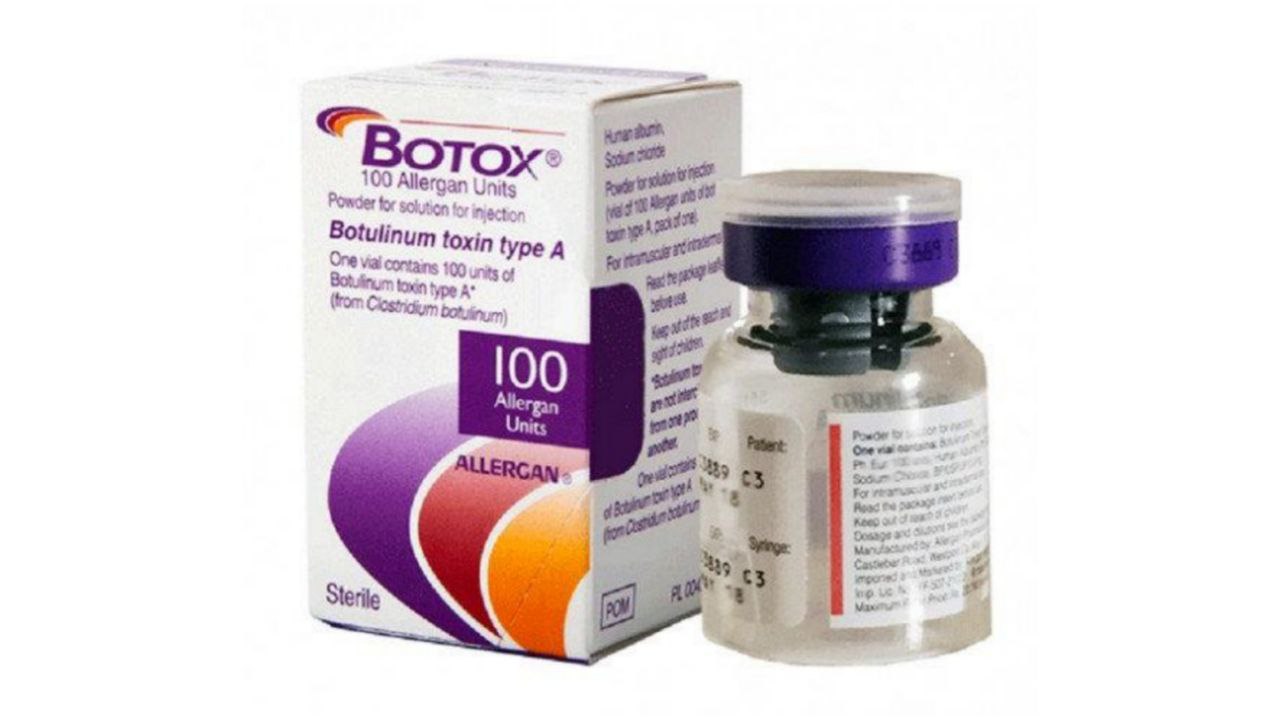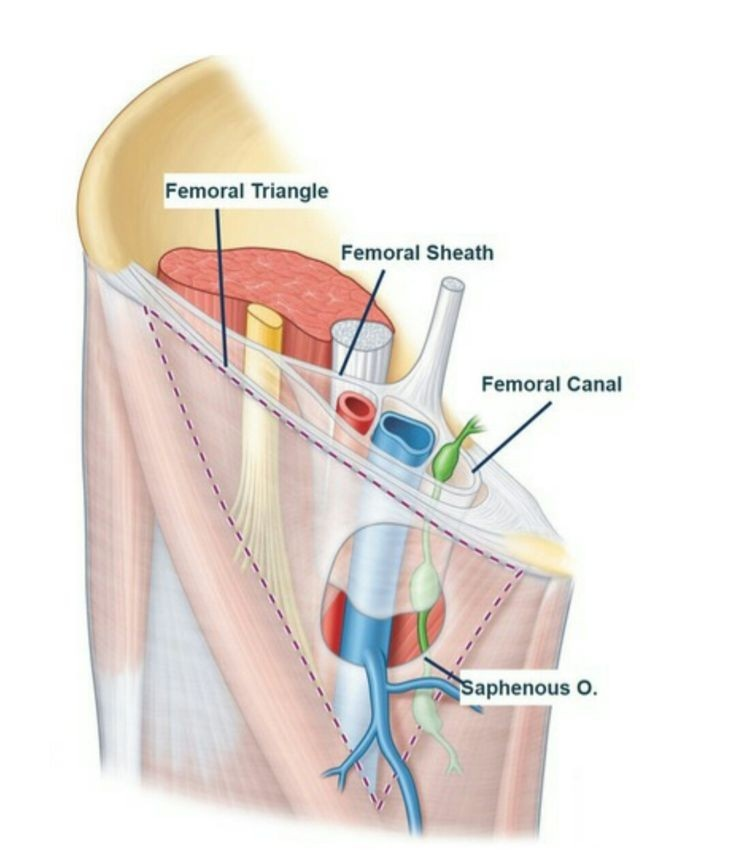
Femoral triangle
By : Safa QusayIntroduction
The femoral triangle is a wedge - shaped area formed by a depression between the muscles of the thigh .It is on the medial aspect of the proximal thigh . It is the region where the main blood vessels and nerve(which supplies the thigh) passage between the pelvis and the lower limb.
It resembles a triangular depression inferior to the inguinal ligament during thigh flexion, abduction and lateral
It resembles a triangular depression inferior to the inguinal ligament during thigh flexion, abduction and lateral

Femoral triangle in living people
Shape and Boundaries of the femoral triangle:
According to its name, is triangular .It is bounded;
1. Superiorly by the inguinal ligament ( thickened inferior margin of external oblique aponeurosis ) .it represents the base of the femoral triangle .
2. Medially by the lateral edge of the adductor longus muscle .
3. Laterally by the Sartorius muscle ; it represents the apex of the femoral triangle , where the medial border of the sartorius meets the lateral border of the adductor longus to form the triangle apex.
1. Superiorly by the inguinal ligament ( thickened inferior margin of external oblique aponeurosis ) .it represents the base of the femoral triangle .
2. Medially by the lateral edge of the adductor longus muscle .
3. Laterally by the Sartorius muscle ; it represents the apex of the femoral triangle , where the medial border of the sartorius meets the lateral border of the adductor longus to form the triangle apex.
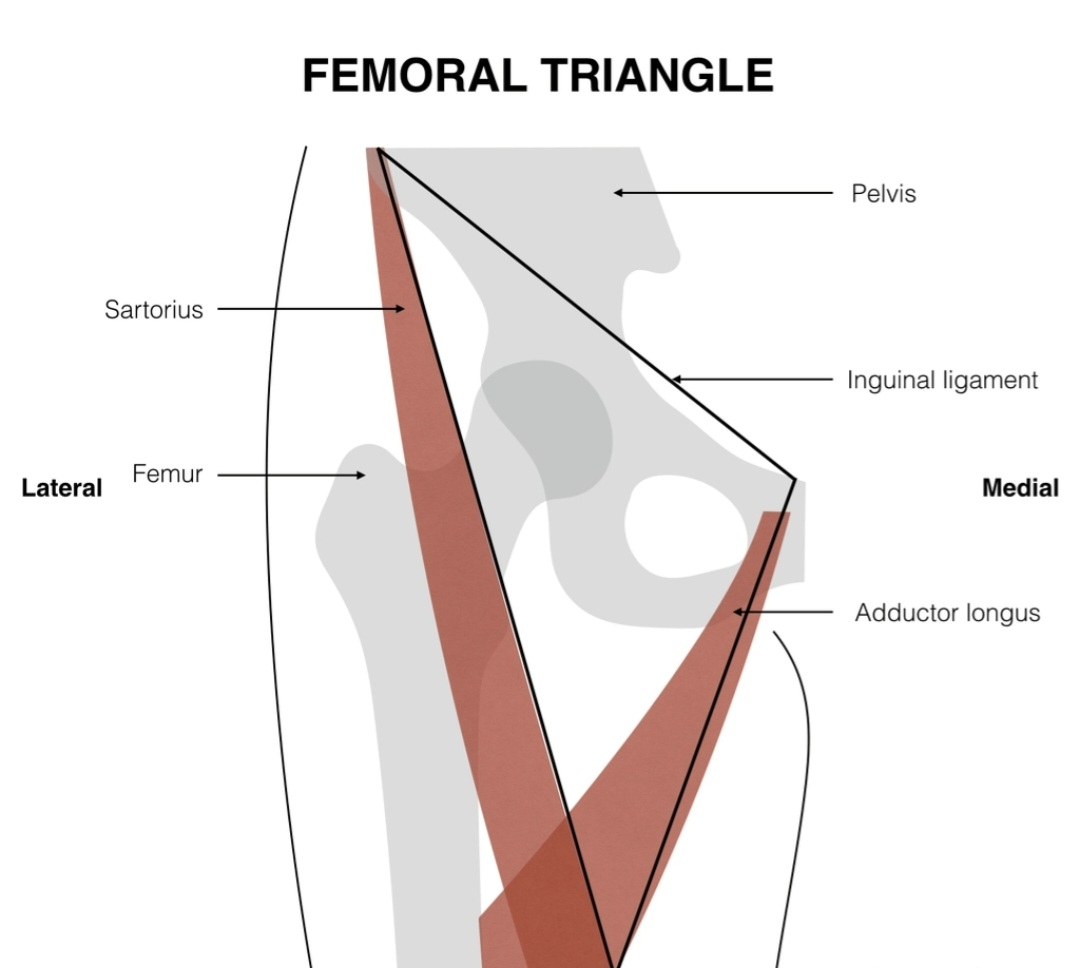
Note :
• The base is formed by the inguinal ligament
• The apex is formed by medial border of the sartorius while it crosses the lateral border of the adductor longus .
• The floor that is represented laterally, is formed by the iliopsoas and the pectineus medially.
• The roof is formed by the fascia lata, cribriform fascia , subcutaneous tissue and skin .
• The base is formed by the inguinal ligament
• The apex is formed by medial border of the sartorius while it crosses the lateral border of the adductor longus .
• The floor that is represented laterally, is formed by the iliopsoas and the pectineus medially.
• The roof is formed by the fascia lata, cribriform fascia , subcutaneous tissue and skin .

Boundaries of femoral triangle
The femoral triangle contents:
lateral to medial:
1. Femoral nerve and its branches .
2. Femoral sheath and its contents :
• Femoral artery and its branches .
• Femoral vein and its proximal branches ( e.g. ,
1. the great saphenous
2. profunda femoris veins ) .
• Deep inguinal lymph nodes
• associated lymphatic vessels .
1. Femoral nerve and its branches .
2. Femoral sheath and its contents :
• Femoral artery and its branches .
• Femoral vein and its proximal branches ( e.g. ,
1. the great saphenous
2. profunda femoris veins ) .
• Deep inguinal lymph nodes
• associated lymphatic vessels .

Important note : the femoral triangle is penetrated by the femoral artery and vein , which pass to and enter from the adductor canal inferiorly at the triangle's apex.
Note
The adductor canal is an intermuscular passage beneath(deep to) the sartorius muscle . The thigh major neurovascular bundle crosses the middle third of the thigh through the adductor canal
Note: The femoral artery, vein and canal are contained within the femoral sheath.
The femoral sheath is a fascia has the shape of funnel, passes deep to the inguinal ligament . The femoral sheath is lining the vascular compartment of the retro - inguinal space
The femoral sheath is a fascia has the shape of funnel, passes deep to the inguinal ligamen
Note
inguinal ligament actually acted as a flexor retinaculum , that has retaining for the structures that pass anterior to the hip joint during the thigh flexion . Deep in the inguinal ligament , the retro - inguinal space (which makes the inguinal ligament spans, that is a gap between the two bony prominences, which it is attached to the anterior superior iliac spine (ASIS) and the pubic tubercle ) is an important passageway for connecting the trunk / abdomino-pelvic cavity to the lower limb.
about Retro-ingulnal space
The retro-inguinal space ( or Bogros space ) is the extraperitoneal space situated deep to the inguinal ligament .
It's limited by:
1. Anteriorly: the fascia transversalis ( look down for information).
2. Posteriorly: the peritoneum
3. Laterally: the iliac fascia.
Transversalis Fascia
It is a thin aponeurotic membrane of the abdomen. It lies between the inner surface of the transverse abdominal muscle and the parietal peritoneum
• The medial compartment contains the femoral vessels(artery and vein) .
• The lateral compartment permits:
1. Iliopsoas muscle passage ( note: iliopsoas muscle is the primary hip flexor )
2. Attachment to the femur , along with the femoral nerve . (the outer layer, it is attached to the abdominal wall and the pelvic walls.)
The retro-inguinal space ( or Bogros space ) is the extraperitoneal space situated deep to the inguinal ligament .
It's limited by:
1. Anteriorly: the fascia transversalis ( look down for information).
2. Posteriorly: the peritoneum
3. Laterally: the iliac fascia.
Transversalis Fascia
It is a thin aponeurotic membrane of the abdomen. It lies between the inner surface of the transverse abdominal muscle and the parietal peritoneum
Note
(is the space between the peritoneum and transversalis fascia) which communicates with the prevesical space( located anterosuperior to the bladder , it has complex communications with the adjacent pelvic extraperitoneal spaces , rectus sheath , and retroperitoneum) of Retzius . It is divided into two compartments : • The medial compartment contains the femoral vessels(artery and vein) .
• The lateral compartment permits:
1. Iliopsoas muscle passage ( note: iliopsoas muscle is the primary hip flexor )
2. Attachment to the femur , along with the femoral nerve .
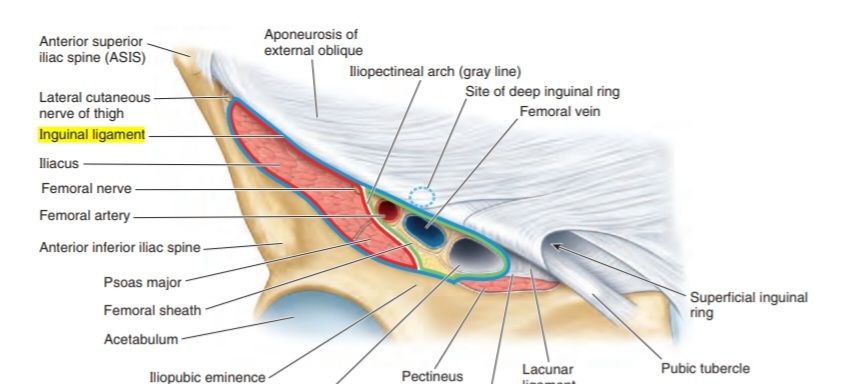
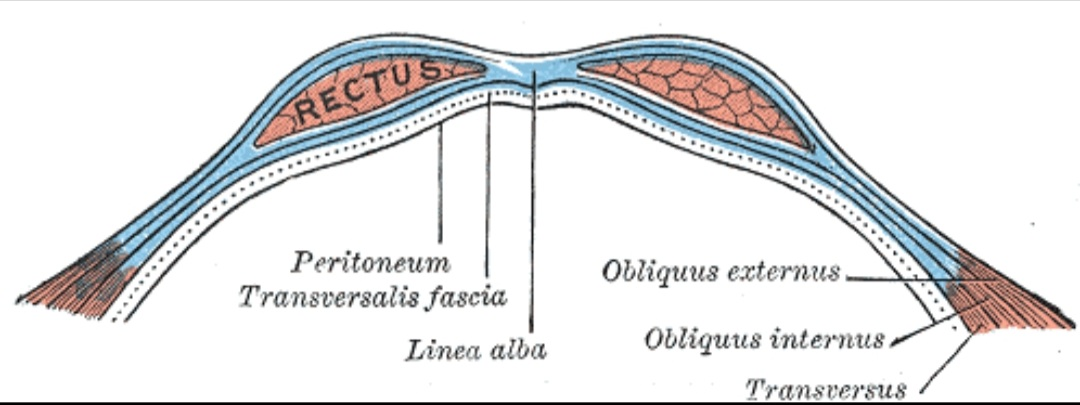
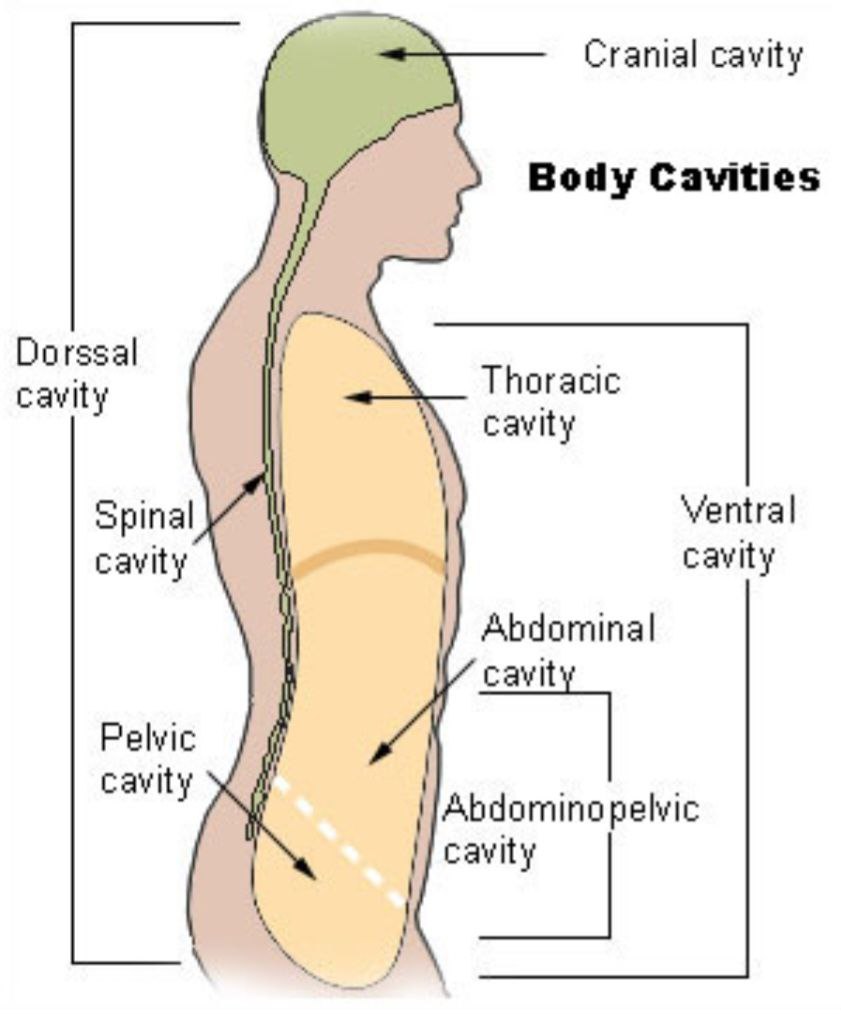
The bounded blue colour is the Retro-inguinal space
Clinical notes:
Clinical Significance of femoral triangle:
1. pain
2. swelling
Assessment in this area can be done by two ways like palpation or ultrasound.
It could be caused by:
• Abscesses
• Cellulitis
• Haematoma
• Nodal enlargement
• Femoral artery aneurysm
• Femoral vein thromobplebitis
• Femoral hernias (may be at proximal opening).
1. pain
2. swelling
Assessment in this area can be done by two ways like palpation or ultrasound.
It could be caused by:
• Abscesses
• Cellulitis
• Haematoma
• Nodal enlargement
• Femoral artery aneurysm
• Femoral vein thromobplebitis
• Femoral hernias (may be at proximal opening).
Thrombophlebitis
That is a circulatory condition ,it happens when a blood clot , which has been developed due
1.Venous inflammation
2. The blood flow inhabitation.
As well as, thrombophlebitis affects the superficial veins of the extremities (arms and legs).
Note: The word is compounded of the term "thrombus" which means the formation of a blood clot.
Causes
suboptimal condition of the veins and disease predispositions, as well as the risk factors exposure, all of which include:
• Immobilisation.
• Trauma or surgical procedures (especially the lymph nodes removal)
• Pregnancy
• Cancerous malformations
• Obesity
• History of thrombosis
• Smoking
1.Venous inflammation
2. The blood flow inhabitation.
As well as, thrombophlebitis affects the superficial veins of the extremities (arms and legs).
Note: The word is compounded of the term "thrombus" which means the formation of a blood clot.
Causes
suboptimal condition of the veins and disease predispositions, as well as the risk factors exposure, all of which include:
• Immobilisation.
• Trauma or surgical procedures (especially the lymph nodes removal)
• Pregnancy
• Cancerous malformations
• Obesity
• History of thrombosis
• Smoking
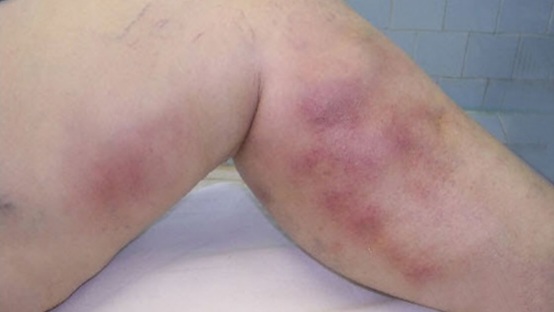
Symptoms
Symptoms are the signs of inflammation, including:
1. Swelling of the body part,
2. Pain
3. Skin redness
4. Warmth
5. Tenderness that is found in area around the vein.
Diagnosis
Thrombophlebitis can be diagnosed by the clinical examination.
To ensure from the diagnosis and to differentiate between it and the phlebothrombosis, use an ultrasound (e.g. Doppler ultrasound)
Treatments
It could be treated by:
1.Anti-coagulants
2.Surgery to remove the entire clogged vein
3.Anti-inflammatory drugs
Symptoms are the signs of inflammation, including:
1. Swelling of the body part,
2. Pain
3. Skin redness
4. Warmth
5. Tenderness that is found in area around the vein.
Diagnosis
Thrombophlebitis can be diagnosed by the clinical examination.
To ensure from the diagnosis and to differentiate between it and the phlebothrombosis, use an ultrasound (e.g. Doppler ultrasound)
Treatments
It could be treated by:
1.Anti-coagulants
2.Surgery to remove the entire clogged vein
3.Anti-inflammatory drugs

Abscess
An abscess is a pus of the painful collection , often caused by a bacterial infection . Abscesses can develop in many areas in the body .
Symptoms
A skin abscess usually appears as a swollen , pus - filled lump under the surface layer of the skin and causes:
1. Pain in the affect area
2. High temperature in the area
Causes
caused by a bacterial infection .
Symptoms
A skin abscess usually appears as a swollen , pus - filled lump under the surface layer of the skin and causes:
1. Pain in the affect area
2. High temperature in the area
Causes
caused by a bacterial infection .
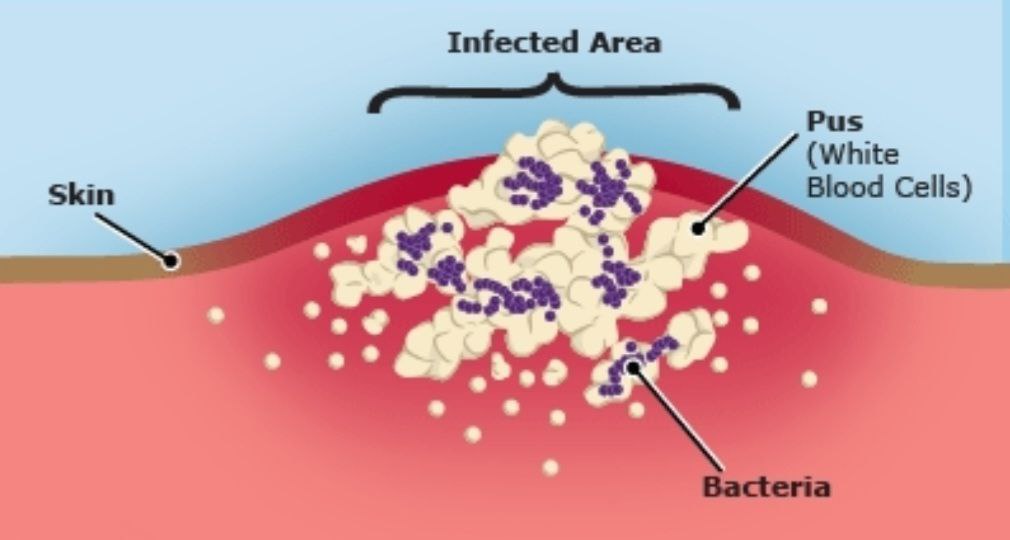
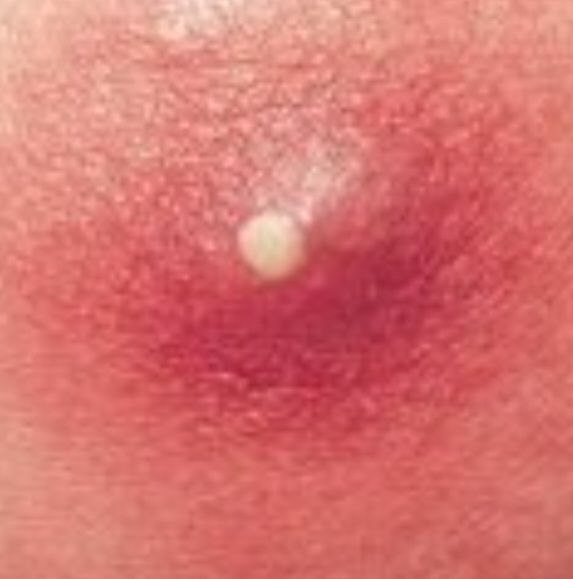
Femoral Aneurysm
It is a weakness in the wall of the femoral artery , that can be found in the thigh .it can burst , that may cause:
• Uncontrolled bleeding(can threat the patient’s life) .
• May also cause a blood clot , potentially may lead to leg amputation .
Causes of femoral aneurysms
1. The cause of femoral aneurysms is not known so far ,
but the atherosclerosis may play a key role .
2. Trauma to the artery may also causes a femoral aneurysms.
Symptoms
Many femoral aneurysms have no symptoms . The most common one symptom is the pain below the knee
Treatment
Surgery is the best way and rapid one to treat femoral aneurysms
• Uncontrolled bleeding(can threat the patient’s life) .
• May also cause a blood clot , potentially may lead to leg amputation .
Causes of femoral aneurysms
1. The cause of femoral aneurysms is not known so far ,
but the atherosclerosis may play a key role .
2. Trauma to the artery may also causes a femoral aneurysms.
Symptoms
Many femoral aneurysms have no symptoms . The most common one symptom is the pain below the knee
Treatment
Surgery is the best way and rapid one to treat femoral aneurysms


Femoral aneurysm( x-ray picture)
References:
1.Femoral Aneurysm ,UVA Healthhttps://uvahealth.com/services/aneurysm-treatment/femoral-aneurysm
2.Abscess, NHS https://www.nhs.uk/conditions/abscess/
3.Retroinguinal space - Spatium retroinguinale, IMAIOS https://www.google.com/amp/s/www.imaios.com/en/amp/e-Anatomy/Anatomical-Parts/Retroinguinal-space
4.MOORE Clinically Oriented ANATOMY Keith L. Moore Arthur F. Dalley Anne M.R. Agur551_552 ,584
5.Moore Clinically Oriented ANATOMY FIGURE 5.26,5.25. Retroinguinal space
6.Collected Papers , 34 all University of Michigan . Department of Surgery 1967 lentes dest 2009 ( a ) J8 217_218
1.Femoral Aneurysm ,UVA Healthhttps://uvahealth.com/services/aneurysm-treatment/femoral-aneurysm
2.Abscess, NHS https://www.nhs.uk/conditions/abscess/
3.Retroinguinal space - Spatium retroinguinale, IMAIOS https://www.google.com/amp/s/www.imaios.com/en/amp/e-Anatomy/Anatomical-Parts/Retroinguinal-space
4.MOORE Clinically Oriented ANATOMY Keith L. Moore Arthur F. Dalley Anne M.R. Agur551_552 ,584
5.Moore Clinically Oriented ANATOMY FIGURE 5.26,5.25. Retroinguinal space
6.Collected Papers , 34 all University of Michigan . Department of Surgery 1967 lentes dest 2009 ( a ) J8 217_218
